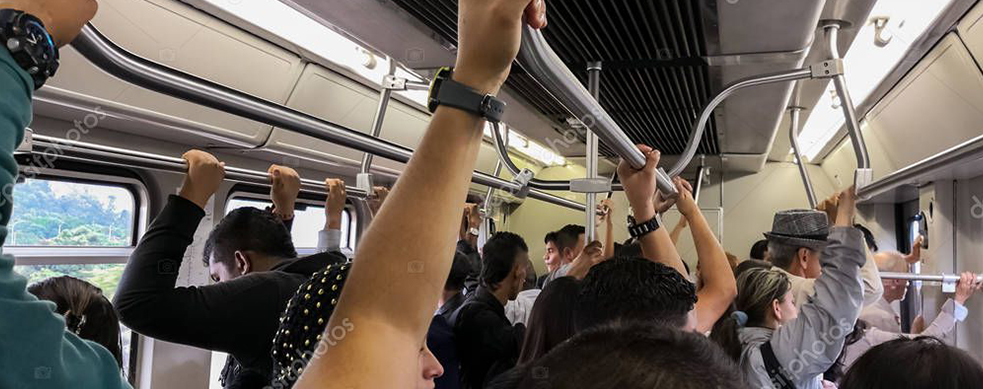
The Importance of Air Quality in Public Transportation Vehicles
Today, with the rapidly increasing population and urbanization, public transportation vehicles have become an indispensable part of people’s daily lives. The fact that people spend most of their time in public transportation vehicles makes the quality of the interior environments of these vehicles very important. Air quality, in particular, is a factor that directly affects the health of both passengers and drivers, and plays a critical role in preventing many negative health problems.
Definition of Air Quality in Public Transportation Vehicles
Air quality is an indicator that determines whether the air components in an environment are suitable for living a healthy life. Public transportation vehicles are generally closed areas, and ensuring air quality in these areas is of great importance in terms of the comfort, health and safety of passengers. Factors that determine the air quality inside include oxygen levels, carbon dioxide density, humidity, temperature, bad odors and harmful particles in the air. These factors directly affect the comfort of people traveling in public transportation vehicles.
Effects of Air Quality on Health
Poor air quality in public transportation vehicles can lead to many health problems. These problems include respiratory diseases, infectious diseases, headaches, fatigue, dizziness and triggering chronic diseases such as asthma. The air is not fresh, is not ventilated enough, carbon dioxide levels are high or being in an environment with intense air pollution can cause passengers to encounter such health problems.
Especially in environments with poor air quality, the bodies of people traveling may experience oxygen deficiency, which can lead to problems such as fatigue, lack of concentration and anxiety. This poses a major health risk not only for passengers but also for vehicle drivers. Being exposed to poor quality air for a long time can reduce the efficiency of drivers and increase accidents.
Causes of Poor Air Quality
There are several reasons for the deterioration of air quality in public transportation vehicles. One of the main factors is that vehicles are not adequately ventilated. Especially in older model vehicles, the lack of modern ventilation systems or lack of maintenance can cause the air quality in the interior to decrease rapidly. If vehicles are frequently closed and air circulation is not provided, the air breathed by passengers can be contaminated with carbon dioxide and toxic gases.
Another important factor is the inadequate cleaning and hygiene in public transport vehicles. Especially during crowded hours and in busy travel areas, vehicles take too many passengers. This can cause the microbes in the air to spread rapidly and the environment to become dirty. In addition, exhaust gases and pollutants from outside in vehicles can worsen the air inside.
Precautions That Can Be Taken to Improve Air Quality
There are various measures that can be taken to improve air quality in public transport vehicles. These measures are issues that both vehicle owners and public authorities should focus on. We can list some of the steps that can be taken in this regard as follows:
Modern Air Cleaning and Filtration Systems
One of the most effective ways to improve air quality in public transport vehicles is to install effective air cleaning and filtration systems in vehicles. These systems provide clean air by filtering pollutants, dust, harmful particles and microorganisms in the air. Ozone gas, which is at the top of modern filtering technologies, also has the ability to eliminate bad odors. Thus, a more comfortable and healthy environment can be created for passengers.
Regular Maintenance and Cleaning of Vehicles
Regular cleaning of vehicle interiors is a factor that directly affects air quality. Providing hygienic environments prevents the spread of germs and bad odors. In addition, regular maintenance of the vehicle’s engine and exhaust systems plays an important role in maintaining air quality.
Providing Adequate Ventilation
An effective ventilation system must be installed in public transportation vehicles. Modern vehicles should be designed to provide the fresh air flow that passengers need. Adequate ventilation prevents carbon dioxide accumulation and ensures sufficient oxygen levels. In addition, passenger comfort can be increased by controlling temperature and humidity.
Pay Attention to Passenger Health
Measures should be taken to take into account the health status of passengers in public transportation vehicles. This is especially important for people who are sensitive to air pollution. Paying attention to personal hygiene rules in vehicles is an important step in providing a healthier environment.
Electric Vehicles and Alternative Energy Sources
Buses powered by electricity or hydrogen and other public transport vehicles offer an environmentally friendly alternative by reducing exhaust gases and air pollution. Electric or hydrogen powered vehicles can be an important solution in urban transportation and can have a significant impact on improving air quality.
Supporting Air Quality in Public Transport Vehicles with Legal Regulations
Many countries have introduced various legal regulations to ensure air quality in public transport vehicles. These regulations encourage transport companies to design the interiors of their vehicles according to certain standards and to perform regular maintenance. Local governments and public authorities can take an active role in ensuring that air quality in public transport vehicles is improved by implementing such regulations.
Air quality in public transport vehicles is a critical factor affecting the health of both passengers and drivers. Therefore, regular cleaning of vehicle interiors, installation of effective air filtration systems and regular maintenance of vehicles, especially using ozone, are important steps to improve air quality. Improving air quality in public transport vehicles not only ensures the comfort of passengers, but is also a major step in protecting public health. In this context, both public transportation companies and local governments can provide healthier, more comfortable and safer transportation opportunities by taking measures to improve air quality.
İlker KURAN
Alperen Mühendislik Ltd. Şti.







